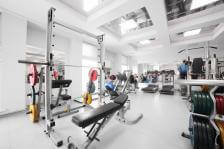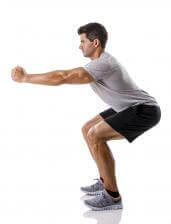What Is Peripheral Heart Action Training (PHA)?
Have you ever heard of Peripheral Heart Action Training (PHA)? In this episode, Get-Fit Guy explains this intense workout and shows you 6 different ways you can use it to achieve big gains in your cardio fitness.
Ben Greenfield
Listen
What Is Peripheral Heart Action Training (PHA)?

But the equipment wasn’t randomly or haphazardly placed. Instead, the first machine was an upper body machine or exercise, the second was a lower body machine or exercise, and they alternated this way consecutively for 16 different stations.
To make the circuit even more tortuous or motivating (depending on your outlook), it also had timing intervals. There was a green light on the wall that would flash for 30 seconds during which you’d lift as hard as you could for as many repetitions as possible. Then, a loud beep would sound and a red light would appear for 15 seconds. That was supposed to be your rest period, although it really only consisted of rapidly hurrying to the next machine to try and get ready for your next exercise.
This workout seemed incredibly effective at building my cardiovascular fitness and my muscle gains simultaneously. Only after reading a recent study this week (nearly 10 years later) did I learn that there’s a name for it: Peripheral Heart Action training (PHA). The study is called, “Peripheral heart action (PHA) training as a valid substitute to high intensity interval training to improve resting cardiovascular changes and autonomic adaptation,”
So, besides not being given the acronym “PHAT,” a seemingly obvious choice for the researchers, what exactly is Peripheral Heart Action training? Well, you’re about to find it out.
What Is PHA?
In the study, 18 young adults (9 women and 9 men) were randomly assigned to either a standard, high intensity interval training group or a peripheral heart action training (PHA) group. Before and after training, the researchers measured maximal whole-body muscular strength, maximum oxygen consumption (VO2Max), heart rate variability, and arterial baroreflex sensitivity (a very good way to measure cardiovascular fitness gains)..
After 30 training sessions performed over a 3-month period, the PHA exercise group significantly outperformed the control group in cardiovascular fitness gains, particularly with regards to blood vessel and heart health and muscular strength.
It turns out that PHA is not a groundbreaking new form of exercise. Dr. Arthur Steinhaus, an exercise scientist, first wrote about it in the 1940s. Then in the 1960s, Bob Gajda, a bodybuilder and former Mr. America and Mr. Universe title holder, brought the workout to the forefront of the bodybuilding world.
So how does it work? The purpose of PHA is to keep blood circulating throughout your whole body during an entire workout, specifically by getting the smaller central muscles around your heart to work first, followed by the larger, peripheral muscles in your arms, legs, and abs. This is in contrast to basic circuit training, which is designed with the goal of getting lots of blood pumping into one specific body part or specific set of muscles in one area of your body.
The way that you achieve this “blood pumping all over the body” effect is to conduct a series of exercises that alternate between one exercise for your upper body or torso, and then one exercise for your lower body. These exercises are done as a circuit, 3-6 times through, with 10-15 repetitions per exercise—a relatively rapid lifting tempo with minimum recovery between sets.
Here’s a sample PHA workout for you to try…..
A Sample PHA Workout
So what would a sample PHA workout look like? If you’re lucky, your gym has a bunch of machines lined up in a row or in a circle that allow you to rapidly alternate between upper body, lower body, and torso exercises. Here are some examples of exercises to do for each:

- Upper body exercises – shoulder presses, chest presses, pull-downs, rows, or pull-ups.
- Lower body exercises – squats, lunges, leg presses, leg extensions, or leg curls.
- Torso exercises – side planks, front planks, twists, v-ups, and leg raises.
- Cardio exercises – upper body rowing and lower body cycling.
For the ultimate workout that combines functional movements that go beyond machines, a few bursts of cardio, and the PHA approach, do a circuit like this:
- Squats
- Overhead presses
- Deadlifts
- Pull-ups or pull-downs
- 250m row
- ¼ mile stationary bike
Another way to use the PHA concept is to use your body weight only. Do fast and furious circuits 10 times through. Here’s one to try:
- 15 push-ups
- 15 body weight squats
- 5-10 pull-ups (optional, if you have access to a bar)
You could also use the concept of PHA for your cardio, almost like a triathlete would. The following workout is fantastic for a beach or a trail that goes along a body of water (Warning: Your shoes will get wet, so something like Vibrams or a water proof, minimalist shoe will work better than regular running shoes):
- Swim 400-500 meters
- Run ½-1 mile
- Get back in the water
- Repeat for desired time
You get the idea! The basic rule is to force your body to shuttle blood rapidly from one area to the next with little to no rest.
Do you have more questions about how to use Peripheral Heart Action training to get big gains in your cardio fitness? Then head over to Facebook GetFitGuy and join the conversation there!

